gbsoundcomparison
Game Boy sound comparison (better than Herbert Weixelbaum’s version)
Page Version: 1.0.1
Written by Aquellex
Contributions from DEFENSE MECHANISM, Pain Perdu, odaxelagnia, Jack L., Vault Kid, cheapshot, Kabcorp, Trash80, ImATrackMan, gekkio, ISSOtm, LIJI32, mewl_me, skybox
&Hammy Havoc
Happy Hippo track by Stello Doussis
PREFACE
This guide aims to extend the work done by Herbert Weixelbaum and append more sound comparisons that are missing from his page.
The title is by no means a malicious attack on Weixelbaum’s work (I got the “better than” phrase from a series of satirical Sonic ROM hacks, so take it as cheeky banter)–what he has done so far for the chipmusic community has been an amazing starting point, but as time has passed over several years, newer discoveries have been unveiled such as replacing capacitors, differences between major mainboard revisions and their likelihood of carrying specific components etc. (e.g. a CGB-CPU-02 is more likely to carry noisier headphone amps in contrast to CGB-CPU-05, which carry refined amps)
It should also be noted that any documentation regarding sound comparisons will never truly be completed, as advancements in technology will inevitably allow for newer discoveries to be made. Please view any guide you see on the Internet as reference, and be aware of sources that may not be up-to-date, including this one.
That being said, if you see any misinformation within this page, please notify me immediately via any means necessary (email aquellex@f0xpa.ws or Twitter @Aquellex) so I can correct them as soon as possible.
All waveform images provided within this document are recorded with the following configuration:
- Envelope: A8
- Wave: 50% (square)
- Note: Lowest pulse note possible on PU1 (displays as C-3 on v4.9.5)
- The waveform is isolated & normalised once more just for the screenshot
All spectrogram images provided within this document are when the Game Boy is left running idle/silent. No normalisation is applied towards this period.
All DC offset images provided within this document are immediately after the squarewave notekill that occurs @ ~6.82s per SNDTEST.lsdsng recording.
The units were played at their highest volumes and recorded peaking at -12dB. The recordings (and the waveforms) have all been normalised to -0.01dB with the exception of the sonogram images. No other further post-processing was done. Rendered in 44.1khz 16-bit, then exported to .ogg (Q10).
| LSDJ 4.9.5 was used for all SNDTEST.lsdsng recordings (unless specified otherwise, which use SNDTEST.lsdsng compiled into .gb) since the project file uses the old logarithmic pitch bend table. Later versions of LSDJ can have positive impacts (e.g. 5.0.0: you can get away with an extra V command on the DMG | 5.1.9 makes P/L commands less CPU-intensive), but will also consequently require workarounds to get pre-5.0.3 quirks to run correctly on higher versions. |
You will hear the following in SNDTEST.lsdsng (starting at 110BPM groove 3/3): 6 bars of intro, 2 bars of the infamous ‘clicking’ side-effect when using volume/pan commands, 19 bars of a full track, then an isolation of a granular synthesis technique. Tempo is then set to T01 (40BPM for DMGs unless using the compiled .gb, 80BPM for GBCs) along with various waveforms (pulses, sine, saw, kits, sine kick, square kick, periodic noise), then at least 0.1 to 2 seconds of LSDJ (or the compiled .gb) running idle.
The second track I’ve chosen for comparison is Stello Doussis’ Happy Hippo theme. It does not make use of any PCM, but its composition & sequencing techniques are very similar to what one can accomplish on a Commodore 64, making it suitable as a control track for what one can expect to exploit out of a Game Boy without using PCM.
PORTABLE
DMG
Ahh, the good old staple of Game Boy music. Thick, bassy sound straight out of the box. Background noise is negligible during playback. A bit of virtually unnoticeable hiss can be found at resonances 9.1-9.4khz and 18-18.7khz. Need I say more? Actually…
One major downside of DMG units is the processor speed. When a track gets too complicated, the unit will choke during playback. Ways to choke a DMG unit include:
- Using two high-frequency vibrato commands simultaneously
- Kit playback
- Using the granular synthesis technique
- Using a tempo setting greater than 220
Fortunately, LSDJ versions greater than 4.3.x are more optimised compared to the 3.x.x days.
Another shortcoming I might add is that the ‘clicking’ side-effect is very prominent (as demonstrated in the Happy Hippo example), but depending on the enjoyment of the composition of your tracks, it’s a nitpick at best.
That being said, this unit is still very accessible today, and the CPU-choking shortcoming ultimately depends on the complexity of your tracks. Great for beginners.
 The type of backlighting kit you use may have a very minor impact on the noise floor.
The type of backlighting kit you use may have a very minor impact on the noise floor.
| Image | Variables | Waveform, spectrogram & DC offset | Sound examples |
|---|---|---|---|
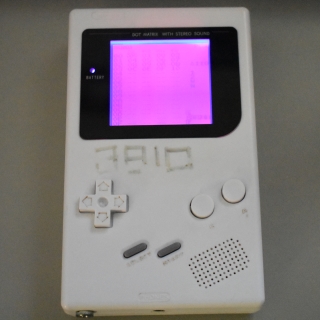 |
* DMG-CPU-06 * Bivert backlight (HHLv2) |
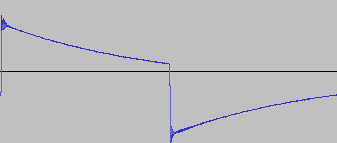  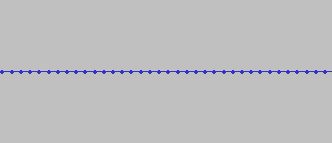 |
SNDTEST.lsdsng Happy Hippo |
DMG (ProSound)
Virtually the same as above, but with some major key differences:
- The background noise is gone entirely
- The hiss resonances can be still found between 9.1-9.4khz and 18-18.7khz (you can eliminate these in recording using surgical EQs)
Highly recommended mod for those getting into scenarios where a line-out jack is involved (especially live performance and recording).
| Image | Variables | Waveform, spectrogram & DC offset | Sound examples |
|---|---|---|---|
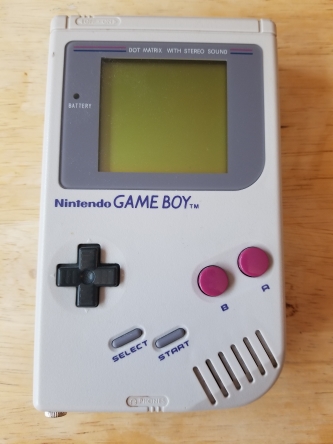 |
* DMG-CPU-06 |
![wf_dmg[ps].png](/gbsoundcomparison/aquellexws/img/wf_dmg%5Bps%5D.png) ![sg_dmg[ps].png](/gbsoundcomparison/aquellexws/img/sg_dmg%5Bps%5D.png) ![dc_dmg[ps].png](/gbsoundcomparison/aquellexws/img/dc_dmg%5Bps%5D.png) |
SNDTEST.lsdsng Happy Hippo |
DMG (capacitor upgrade)
Now you’re playing with power! Thanks, Kabcorp!
 Changing original capacitor values may result in sub-frequency anomalies (e.g. DC offset issues). This can be mitigated by applying a low-shelf EQ below audible range (30 Hz is recommended).
Changing original capacitor values may result in sub-frequency anomalies (e.g. DC offset issues). This can be mitigated by applying a low-shelf EQ below audible range (30 Hz is recommended).
| Image | Variables | Waveform, spectrogram & DC offset | Sound examples |
|---|---|---|---|
![pho_dmg[cap].jpg](/gbsoundcomparison/aquellexws/img/pho_dmg%5Bcap%5D.jpg) |
* DMG-CPU-06 * 6.8µF capacitor * Compiled SNDTEST.gb |
![wf_dmg[cap].png](/gbsoundcomparison/aquellexws/img/wf_dmg%5Bcap%5D.png) ![sg_dmg[cap].png](/gbsoundcomparison/aquellexws/img/sg_dmg%5Bcap%5D.png) ![dc_dmg[cap].png](/gbsoundcomparison/aquellexws/img/dc_dmg%5Bcap%5D.png) |
SNDTEST.lsdsng Happy Hippo |
Use BGB or get yourself a throwaway DMG (or GBC/GBA/GBASP if you need the CPU firepower) instead. There are very little advantages to using a vanilla Pocket unit (except for when in a pinch):
- The processor speed issue from the DMG is still present
- Fuzzy sound
- Hiss (9-9.4khz, 13.7-13.8khz, 18.2-18.7khz) and hum (0-262hz) are noticeable during playback (though the hiss becomes less noticeable when LSDJ is idle)
If you really need to use one as a last resort, don’t forget to turn up the bass on the EQ + remove unwanted resonances when post-processing.
On a more positive note, the sound is more tolerable than a vanilla Color unit.
| Image | Variables | Waveform, spectrogram & DC offset | Sound examples |
|---|---|---|---|
 |
* MGB-LCPU-02 |
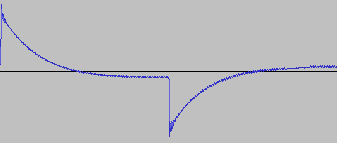  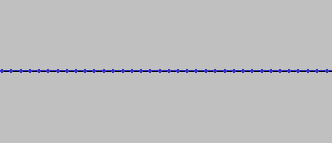 |
SNDTEST.lsdsng Happy Hippo |
Pocket (ProSound)
Thank you, mewl_me for the recordings!
Additional notes from them:
I did Internal ProSound mod for both.
And, I rewired the GND of the Volume to the Speaker GND.
Ie, the volume GND is connected to GND through a 100 μF capacitor.
1 V DC was flowing from headphone jack L to its GND, but this made it 0.1 mV.
| Image | Variables | Waveform, spectrogram & DC offset | Sound examples |
|---|---|---|---|
![pho_pocket[ps].png](/gbsoundcomparison/aquellexws/img/pho_pocket%5Bps%5D.png) |
* MGB-CPU-01 * Internal ProSound * Rewired volume’s ground |
![wf_pocket[ps].png](/gbsoundcomparison/aquellexws/img/wf_pocket%5Bps%5D.png) ![sg_pocket[ps].png](/gbsoundcomparison/aquellexws/img/sg_pocket%5Bps%5D.png)  |
SNDTEST.lsdsng Happy Hippo |
Pocket (capacitor mod)
| Image | Variables | Waveform, spectrogram & DC offset | Sound examples |
|---|---|---|---|
![pho_pocket[ps+c].png](/gbsoundcomparison/aquellexws/img/pho_pocket%5Bps+c%5D.png) |
* MGB-LCPU-01 * 4.7 µF capacitor * Internal ProSound * Rewired volume’s ground |
![wf_pocket[ps+c].png](/gbsoundcomparison/aquellexws/img/wf_pocket%5Bps+c%5D.png) ![sg_pocket[ps+c].png](/gbsoundcomparison/aquellexws/img/sg_pocket%5Bps+c%5D.png)  |
SNDTEST.lsdsng Happy Hippo |
Light
Thank you, ImATrackMan for the recordings!
Very similar to the pocket–after all, it is effectively a Game Boy Pocket, but with a toggleable light. More noise is introduced while the light is turned on.
- Hiss resonances (without light): 8.9-9.6khz, 18.2-18.7khz
-
Hum resonances (without light): 0-259hz
- Hiss resonances (with light): 5.26-5.58khz, 6.12-6.46khz, 7-7.3khz, 7.9-8.2khz, 8.9-9.6khz, 9.74-10.07khz, 10.6-10.93khz, 11.4-11.8khz, 12.3-12.85khz, 14.2-14.56khz, 15.4-16.3khz, 18.2-18.7khz
- Hum resonances (with light): 0-259hz, 787hz-1.1khz, 1.6-2khz, 2.5-2.85khz, 3.53-3.71khz, 4.23-4.74khz
| Image | Variables | Waveform, spectrogram & DC offset | Sound examples |
|---|---|---|---|
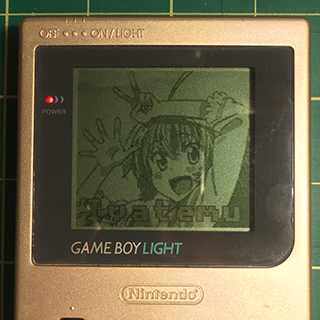 |
* MGL-CPU-01 * Lights off * Compiled SNDTEST.gb |
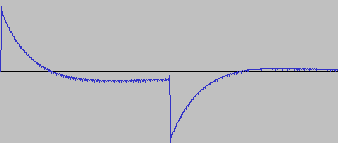   |
SNDTEST.lsdsng Happy Hippo |
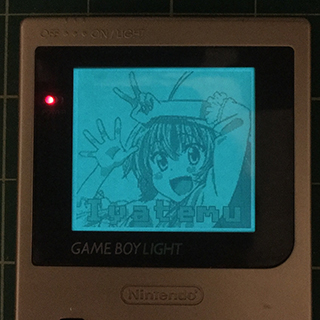 |
* MGL-CPU-01 * Lights on * Compiled SNDTEST.gb |
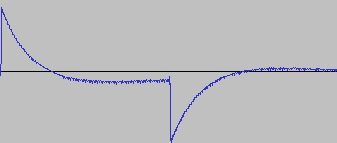   |
SNDTEST.lsdsng Happy Hippo |
Color
Ahh yes, the infamous Game Boy Color that every chipscener loves to blindly dismiss as one of the noisiest Game Boys that are simply not worth your time at all. While it’s true it does suffer the same symptoms from the stock Pocket (only much worse), at least you can throw heavy-duty commands that would make a DMG choke to oblivion, and there’s always turning up the bass EQ and surgically removing the unwanted resonances in post-processing. Also, there’s noise-cancelling and bass mods available for the Color, but we’ll get to that soon.
- Hiss resonances: 9-9.4khz, 13.7-13.9khz, 18.2-18.7khz
- Hum resonances: 0-260hz, 1.1-1.3khz, 4.3-4.7khz
There’s also a noise cancellation through stereo inversion technique here, discovered by EvilWezil. Useful for those in a pinch when recording.
If you had to pick between a Color and the Advance series with no mods factored in, go for the Advance series instead (especially SP if you’re factoring in button ergonomics).
 Watch out for CGB-CPU-01/02/03 mainboards, as they have a high chance of having a CPU CGB 0/A/B (not to be confused with the mainboards), which contains a fatal envelope bug that kills notes unexpectedly upon using pitch bends & vibrato commands. Earlier mainboards are also more likely to carry noisier amplifiers.
Watch out for CGB-CPU-01/02/03 mainboards, as they have a high chance of having a CPU CGB 0/A/B (not to be confused with the mainboards), which contains a fatal envelope bug that kills notes unexpectedly upon using pitch bends & vibrato commands. Earlier mainboards are also more likely to carry noisier amplifiers.
Additional information courtesy of LIJI32 circa 25/05/2019:
- CGB-A fixed CGB-0’s uninitialized wave RAM
- CGB-B fixed CGB-A’s zombie mode behavior
- CGB-C fixed CGB-B’s sweep cutoff bug
- CGB-D fixed CGB-C’s PCMxx read bug and altered/improved some PPU behaviors
- CGB-E fixed some CGB-D PPU quirk Matt found
Other than the bug CGB-E fixed (which is CGB-D exclusive), all bugs are carried from CGB-0 until the version they were fixed in.
| Image | Variables | Waveform, spectrogram & DC offset | Sound examples |
|---|---|---|---|
 |
* CGB-CPU-03 |
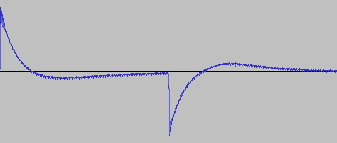  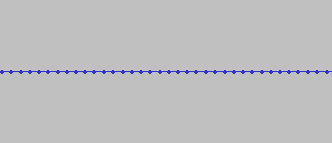 |
SNDTEST.lsdsng Happy Hippo |
 |
* CGB-CPU-02 |
![wf_cgb[02].png](/gbsoundcomparison/aquellexws/img/wf_cgb%5B02%5D.png) ![sg_cgb[02].png](/gbsoundcomparison/aquellexws/img/sg_cgb%5B02%5D.png) ![dc_cgb[02].png](/gbsoundcomparison/aquellexws/img/dc_cgb%5B02%5D.png) |
SNDTEST.lsdsng Happy Hippo Pitch bend & vibrato test |
Color (ProSound)
An improvement that salvages the vanilla Color’s noisy environment. One thing to note that while the Color is tacet, it’s a pretty silent system with the hum/hiss resonances from the vanilla Color being inaudible, but during playback, the resonances become a lot more obvious. That can be rectified with a capacitor mod that we’ll get to immediately after this section.
Don’t forget to turn up the bass on the EQ during a live performance, as the bass without any kind of EQ is pretty tame compared to the stock DMG.
- Hiss resonances: Same as above
- Hum resonances: Same as above
| Image | Variables | Waveform, spectrogram & DC offset | Sound examples |
|---|---|---|---|
![pho_cgb[ps].jpg](/gbsoundcomparison/aquellexws/img/pho_cgb%5Bps%5D.jpg) |
* CGB-CPU-04 * RCA |
![wf_gbc[ps].png](/gbsoundcomparison/aquellexws/img/wf_gbc%5Bps%5D.png) ![sg_gbc[ps].png](/gbsoundcomparison/aquellexws/img/sg_gbc%5Bps%5D.png) ![dc_gbc[ps].png](/gbsoundcomparison/aquellexws/img/dc_gbc%5Bps%5D.png) |
SNDTEST.lsdsng Happy Hippo |
Color (pin3 mod)
BennVenn’s pin3 mod that is also used for his GBC backlight mod. Kinda looks like a hybrid of a stock & ProSound Color, but the hiss & hum resonances are less obnoxious compared to the stock GBC. Again, don’t forget to turn up the bass on the EQ during a live performance, as the bass without any kind of EQ is pretty tame compared to the stock DMG.
 I need more samples to really know what’s going on since I suspect my pin3 GBC is just outputting what one would expect out of a stock CGB-CPU-05.
I need more samples to really know what’s going on since I suspect my pin3 GBC is just outputting what one would expect out of a stock CGB-CPU-05.
- Hiss resonances: Same as above
- Hum resonances: Same as above
| Image | Variables | Waveform, spectrogram & DC offset | Sound examples |
|---|---|---|---|
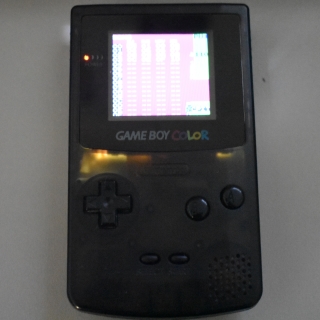 |
* CGB-CPU-05 * BennVenn GBC Backlight * Pin3 Mod |
![wf_cgb[pin3].png](/gbsoundcomparison/aquellexws/img/wf_cgb%5Bpin3%5D.png) ![sg_cgb[pin3].png](/gbsoundcomparison/aquellexws/img/sg_cgb%5Bpin3%5D.png) ![dc_cgb[pin3].png](/gbsoundcomparison/aquellexws/img/dc_cgb%5Bpin3%5D.png) |
SNDTEST.lsdsng Happy Hippo Pitch bend & vibrato test |
Color (noise cancel + bass boost)
Thanks to this wonderful modification pioneered by katsumbhong, the Color now gets a *major* upper hand against the DMG that is universally praised for its thick bass. This mod places the Color on par with the DMG, with an upper hand on CPU firepower. The infamous ‘clicking’ side-effect when using too many volume envelopes and hardpans is still present, however.
That being said, the mod is more involved than your typical ProSound mod, given the extra capacitors required. But if you are able to execute the mod (or find somebody who can) correctly, it pays great dividends. Excellent for every scenario imaginable!
 Changing original capacitor values may result in sub-frequency anomalies (e.g. DC offset issues). This can be mitigated by applying a low-shelf EQ below audible range (30 Hz is recommended).
Changing original capacitor values may result in sub-frequency anomalies (e.g. DC offset issues). This can be mitigated by applying a low-shelf EQ below audible range (30 Hz is recommended).
| Image | Variables | Waveform, spectrogram & DC offset | Sound examples |
|---|---|---|---|
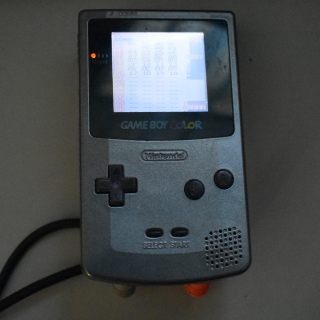 |
* RCA * CGB-CPU-05 * AGS-001 frontlight |
![wf_gbc[nc+bb].png](/gbsoundcomparison/aquellexws/img/wf_gbc%5Bnc+bb%5D.png) ![sg_gbc[nc+bb].png](/gbsoundcomparison/aquellexws/img/sg_gbc%5Bnc+bb%5D.png) ![dc_gbc[nc+bb].png](/gbsoundcomparison/aquellexws/img/dc_gbc%5Bnc+bb%5D.png) |
SNDTEST.lsdsng Happy Hippo |
Advance
Thank you, DEFENSE MECHANISM for the recordings!
Bassy sound straight out of the box, which is very nice, and a powerful CPU to boot. The Advance series are also best known for being the least clickiest Game Boys in the series, which is a big plus, especially with tracks like Happy Hippo.
The hum and hisses are at their most noticeable when LSDJ is idle, and become less noticeable than the stock Pocket during playback.
- Hiss resonances: 6.6-7khz, 9-9.4khz, 13.1-14.0khz, 20.2-20.6khz
- Hum resonances: 0-260hz
Sample playback is less satisfying than the pure GB models, even with the antispike patch introduced in v4.7.0, though it’s a negligible nitpick at best.
Button ergonomics are awkward, though there are mods to reroute the Start/Select buttons to L/R respectively, if you’re willing to sacrifice those buttons solely for LSDJ.
| Image | Variables | Waveform, spectrogram & DC offset | Sound examples |
|---|---|---|---|
 |
* ??? |
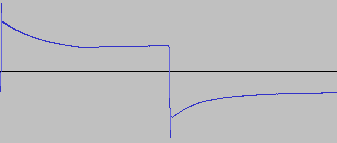  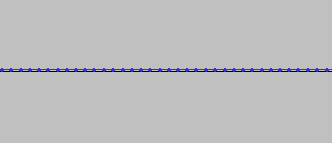 |
SNDTEST.lsdsng Happy Hippo |
SP
Thank you, DEFENSE MECHANISM for the recordings!
Background noise (hum & hiss) is negligable during playback for the AGS-001 used in the recording; hum is very noticeable during playback for the AGS-101 used, unfortunately. Sample playback is still a negligable nitpick.
There is a chance that resonance severity may vary from motherboard to motherboard, but we don’t have enough data for the time being.
- Hiss resonances: 8.2-8.5khz, 9.9-10.4khz, 12.8-13.2khz, 17.3-17.7khz
- Hum resonances: 0-265hz, 3.2-3.9khz
Don’t forget this stereo inversion technique here.
| Image | Variables | Waveform, spectrogram & DC offset | Sound examples |
|---|---|---|---|
 |
* AGS-001 |
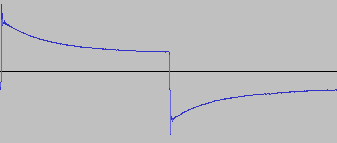  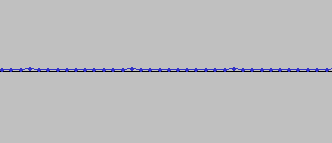 |
SNDTEST.lsdsng Happy Hippo |
 |
* AGS-101 |
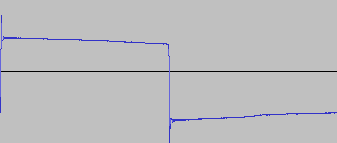  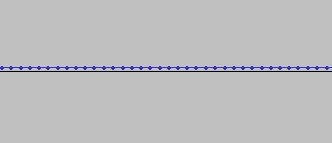 |
SNDTEST.lsdsng Happy Hippo |
SP (ProSound)
Thank you, Cheapshot for the recordings!
| Image | Variables | Waveform, spectrogram & DC offset | Sound examples |
|---|---|---|---|
![pho_gbasp[ps].png](/gbsoundcomparison/aquellexws/img/pho_gbasp%5Bps%5D.png) |
* 3.5mm ProSound * AGS-101 |
![wf_gbasp[ps].png](/gbsoundcomparison/aquellexws/img/wf_gbasp%5Bps%5D.png) ![sg_gbasp[ps].png](/gbsoundcomparison/aquellexws/img/sg_gbasp%5Bps%5D.png) ![dc_gbasp[ps].png](/gbsoundcomparison/aquellexws/img/dc_gbasp%5Bps%5D.png) |
SNDTEST.lsdsng |
GBBoy
Thank you, Kabcorp for the recordings!
The original Chinese 5mhz Quartz Oscillator was replaced with a 4mhz one. More information to come.
| Image | Variables | Waveform, spectrogram & DC offset | Sound examples |
|---|---|---|---|
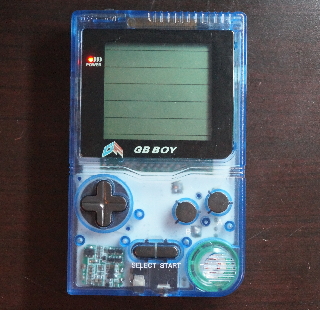 |
* 4mhz quartz oscillator |
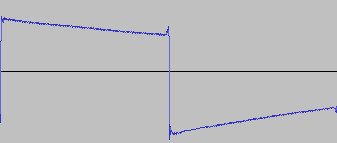   |
SNDTEST.lsdsng |
HOME
Super Game Boy
Thank you, DEFENSE MECHANISM for the recordings!
There is a high-pitched hiss that can easily be heard in recordings.
Word of caution: the Super Game Boy is faster than any other Game Boy hardware (about 2.4% faster; cheers My Life in Gaming!) and the tunings are off by a semitone higher for any game (as evident by the Happy Hippo recording). LSDJ corrects this tuning issue through software when in SGB mode, however.
- Hiss resonances: 7.8-8.2khz, 9.2-9.6khz, 15-16.4k, 18.7-19khz
- Hum resonances: 0-250hz, 1.1-1.3khz, 2.2-2.5khz, 3.4-3.7khz, 4.5-4.9khz, 5.8-6khz
| Image | Variables | Waveform, spectrogram & DC offset | Sound examples |
|---|---|---|---|
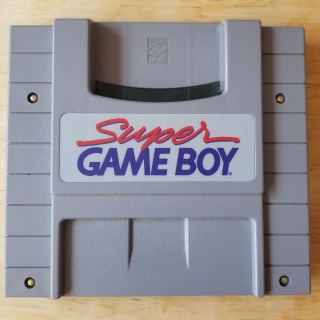 |
* ??? |
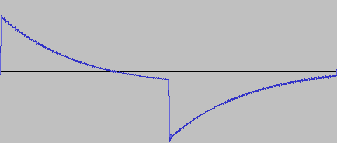  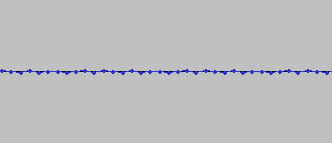 |
SNDTEST.lsdsng Happy Hippo |
Super Game Boy (ProSound)
Thank you, DEFENSE MECHANISM for the recordings!
What an interesting looking waveform compared to the non-ProSound…
See above for resonances, they’re still the same.
| Image | Variables | Waveform, spectrogram & DC offset | Sound examples |
|---|---|---|---|
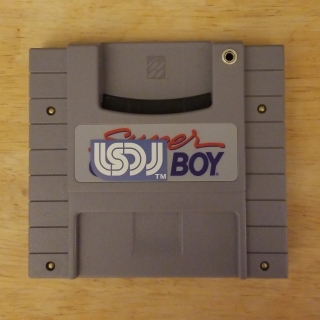 |
* ??? |
![wf_sgb[ps].png](/gbsoundcomparison/aquellexws/img/wf_sgb%5Bps%5D.png) ![sg_sgb[ps].png](/gbsoundcomparison/aquellexws/img/sg_sgb%5Bps%5D.png) ![dc_sgb[ps].png](/gbsoundcomparison/aquellexws/img/dc_sgb%5Bps%5D.png) |
SNDTEST.lsdsng Happy Hippo |
Super Game Boy 2
Thank you, DEFENSE MECHANISM for the recordings!
The Super Game Boy 2 corrects the speed issue from the original SGB. Alas, it was only released in Japan. An obnoxious hiss can be heard during recordings, and has a tendency to tack onto PCM samples.
- Hiss resonances: 7.8-8.2khz, 9-9.4khz, 13.5-14khz, 15.4-16.1khz, 17.5-18khz, 18.3-18.5khz, 21.6-21.8khz
- Hum resonances: 3.3-3.6khz, 5.8-6.1khz
| Image | Variables | Waveform, spectrogram & DC offset | Sound examples |
|---|---|---|---|
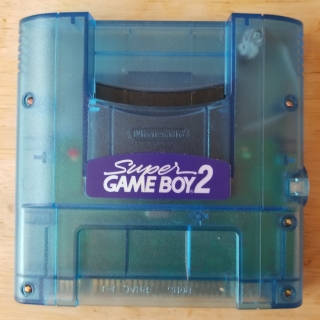 |
* ??? |
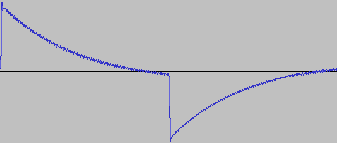  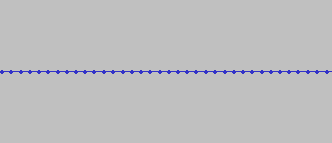 |
SNDTEST.lsdsng Happy Hippo |
Super Game Boy 2 (ProSound)
Thank you, DEFENSE MECHANISM for the recordings!
The funky-looking waveform side effect still occurs from the SGB1!
| Image | Variables | Waveform, spectrogram & DC offset | Sound examples |
|---|---|---|---|
 |
* ??? |
![wf_sgb2[ps].png](/gbsoundcomparison/aquellexws/img/wf_sgb2%5Bps%5D.png) ![sg_sgb2[ps].png](/gbsoundcomparison/aquellexws/img/sg_sgb2%5Bps%5D.png) ![dc_sgb2[ps].png](/gbsoundcomparison/aquellexws/img/dc_sgb2%5Bps%5D.png) |
SNDTEST.lsdsng Happy Hippo |
Game Boy Player
Thank you, DEFENSE MECHANISM for the US motherboard recordings!
Uses the same authentic hardware as the original GBA! Background noise is somewhat negligible during normal playback.
While the original GameCube controller lacks a SELECT button, you have a few good options:
- Remap the SELECT button to the L-Trigger in software
- Purchase one of HORI’s Game Boy Player digital controllers (beware: these are almost as expensive as the infamous component cables)
- Purchase one of raphnet technologies’ SNES-to-GameCube adaptors (much more affordable!)
| Image | Variables | Waveform, spectrogram & DC offset | Sound examples |
|---|---|---|---|
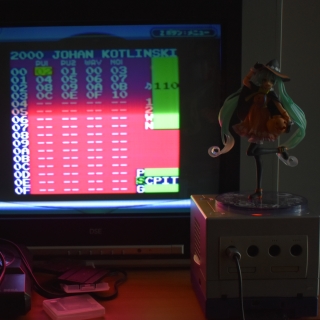 |
* DOL-GBS-01 (JPN) |
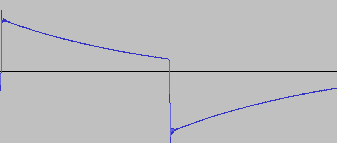  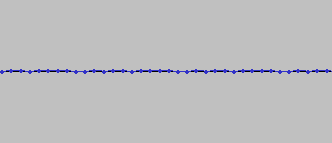 |
SNDTEST.lsdsng Happy Hippo |
 |
* DOL-GBS-20 (US) |
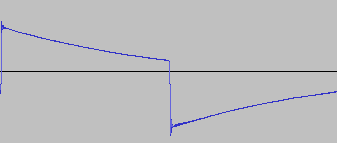  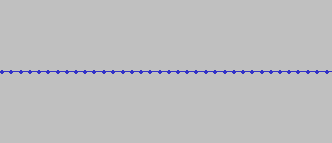 |
SNDTEST.lsdsng Happy Hippo |
Game Boy Player (ProSound)
Thank you, DEFENSE MECHANISM for the recordings and finding an appropriate page regarding the mod!
On par with, if not better than the Color noise cancel + bass boost, with the added edge of the ‘clicking’ side-effect being a lot more muted in akin to the GBA series as expected. The background noise is on par with, if not a couple more resonances than the stock DMG & GBAs, but during playback, it’s negligable at best, especially when compared with the pocket series.
A magnificent companion for the Color/SP-seasoned composer.
 Changing original capacitor values may result in sub-frequency anomalies (e.g. DC offset issues). This can be mitigated by applying a low-shelf EQ below audible range (30 Hz is recommended).
Changing original capacitor values may result in sub-frequency anomalies (e.g. DC offset issues). This can be mitigated by applying a low-shelf EQ below audible range (30 Hz is recommended).
| Image | Variables | Waveform, spectrogram & DC offset | Sound examples |
|---|---|---|---|
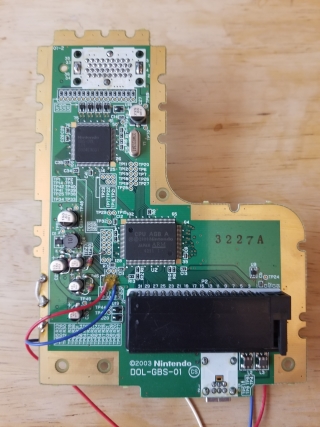 |
* RCA * DOL-GBS-01 (JPN) * LPF Resistor * LPF Capacitor |
![wf_gbp[ps+c].png](/gbsoundcomparison/aquellexws/img/wf_gbp%5Bps+c%5D.png) ![sg_gbp[ps+c].png](/gbsoundcomparison/aquellexws/img/sg_gbp%5Bps+c%5D.png) ![dc_gbp[ps+c].png](/gbsoundcomparison/aquellexws/img/dc_gbp%5Bps+c%5D.png) |
SNDTEST.lsdsng Happy Hippo |
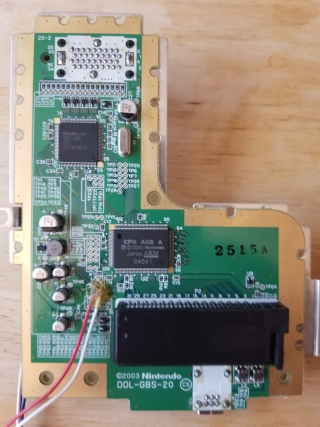 |
* RCA * DOL-GBS-20 (US) * 470 Ohm Resistor * .01uF Capacitor |
![wf_gbpus[ps+c].png](/gbsoundcomparison/aquellexws/img/wf_gbpus%5Bps+c%5D.png) ![sg_gbpus[ps+c].png](/gbsoundcomparison/aquellexws/img/sg_gbpus%5Bps+c%5D.png) ![dc_gbpus[ps+c].png](/gbsoundcomparison/aquellexws/img/dc_gbpus%5Bps+c%5D.png) |
SNDTEST.lsdsng Happy Hippo |
EMULATED
BGB (PC)
Believe it or not, BGB’s emulator is better than the stock Color & Color w/ ProSound (and yes, even the pocket series). There’s also virtually no background noise (there’s a bit of air that can be found within the spectrogram, but it’s virtually impossible to hear). Good for home use, and always excellent for beginners.
| Image | Variables | Waveform, spectrogram & DC offset | Sound examples |
|---|---|---|---|
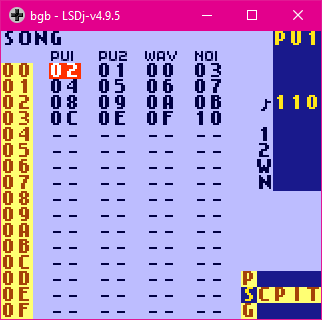 |
* WAV output * GBC mode |
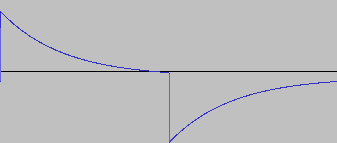  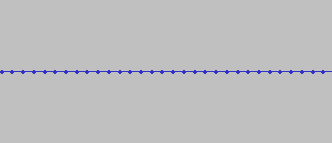 |
SNDTEST.lsdsng Happy Hippo |
VisualBoyAdvance
You’d think the illustrations below would represent a behemoth of a sound unit, but there are three major problems: the timbre for very high notes & noise channel are off, the temperament is slightly sharper than the standard A440, and a DC offset more severe than any hardware upgrade documented above. It does carry the GBA’s less-clicky characteristic, however.
| Image | Variables | Waveform, spectrogram & DC offset | Sound examples |
|---|---|---|---|
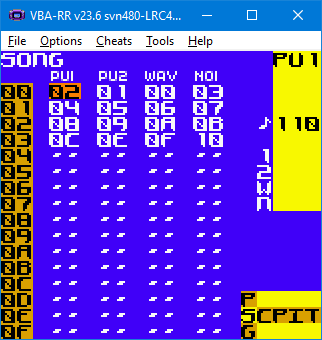 |
* WAV output * GBC mode * 44 kHz |
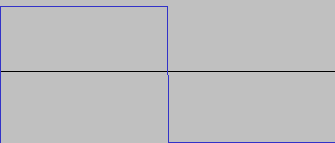  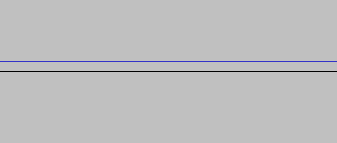 |
SNDTEST.lsdsng Happy Hippo |
SameBoy (tommitytom’s RetroPlug fork)
tommitytom has created a fork of SameBoy which is wrapped in the form of a VST, with MIDI & Arduinoboy support! Also comes with 4 modes: DMG-B, CGB-C, CGB-E and AGB. When observing the same silence & square wave controls, they seem virtually identical, but there are minute differences between major CPU revisions (pay attention to the timbre of the PCM and periodic noise).
| Image | Variables | Waveform, spectrogram & DC offset | Sound examples |
|---|---|---|---|
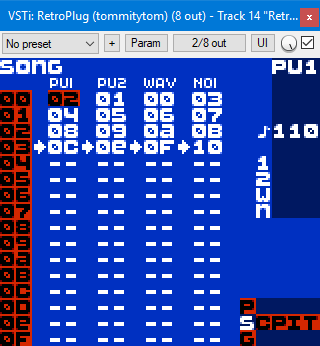 |
* REAPER 5.965 stereo mix output from VST * DMG-B mode * Default options |
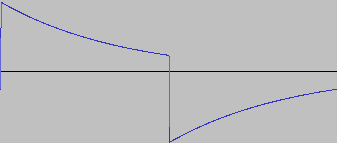   |
SNDTEST.lsdsng Happy Hippo |
 |
* REAPER 5.965 stereo mix output from VST * CGB-C mode * Default options |
   |
SNDTEST.lsdsng Happy Hippo |
 |
* REAPER 5.965 stereo mix output from VST * CGB-E mode * Default options |
   |
SNDTEST.lsdsng Happy Hippo |
 |
* REAPER 5.965 stereo mix output from VST * AGB mode * Default options |
   |
SNDTEST.lsdsng Happy Hippo |
DS Lite
Thank you, odaxelagnia for the recordings!
Poor PCM emulation.
Lameboy has timbre issues similar to VisualBoyAdvance.
| Image | Variables | Waveform, spectrogram & DC offset | Sound examples |
|---|---|---|---|
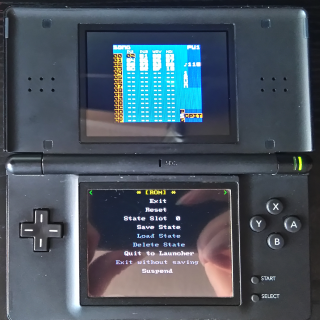 |
* Gameyob |
  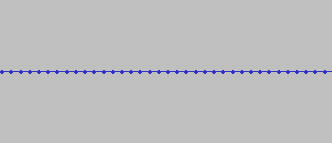 |
SNDTEST.lsdsng Happy Hippo |
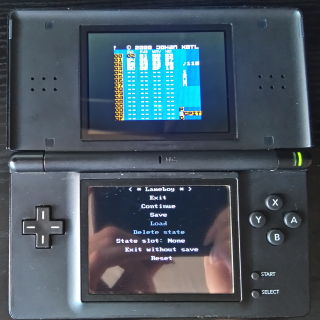 |
* Lameboy |
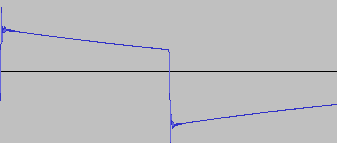  |
SNDTEST.lsdsng Happy Hippo |
PSP
Excellent bass, but is ruined by poor PCM emulation with the two best emulator choices we have. Periodic noise emulation is a bit finicky as well (you can hear it towards the ends of SNDTEST.lsdsng). Tempo is faster than standard recordings.
| Image | Variables | Waveform, spectrogram & DC offset | Sound examples |
|---|---|---|---|
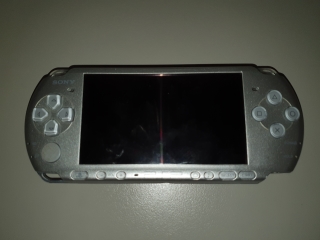 |
* MasterBoy v2.10 * TA-090v2 |
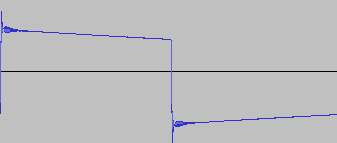  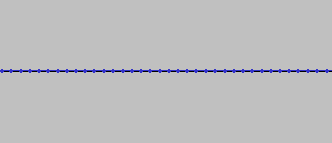 |
SNDTEST.lsdsng Happy Hippo |
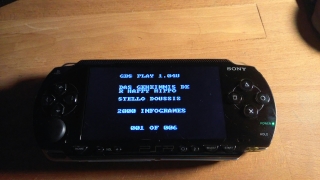 |
* Homer’s RIN * TA-081 |
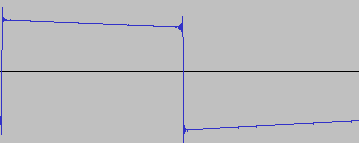  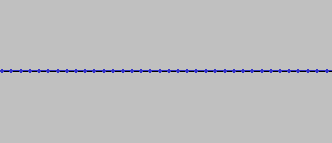 |
SNDTEST.lsdsng Happy Hippo |
NINTENDO SWITCH
Thank you, skybox for the recordings!
More information to come.
| Image | Variables | Waveform, spectrogram & DC offset | Sound examples |
|---|---|---|---|
 |
* ??? |
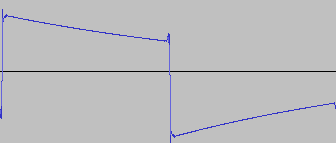   |
SNDTEST.lsdsng Happy Hippo |
CONCLUSION
This page as a reference is already helpful enough to give you a good idea on what units are desirable, especially if you don’t have access to such units in the first place, but at the end of the day, it is imperative that you do not trust this page (or any other for that matter) in blind faith. I highly recommend that you test your sound setups yourself. Even if you don’t have the physical units, you can use the recordings provided. Verify that what you see is what you get. Gauge whether the recordings (or your own hardware) sound fine or not on loudspeakers for your needs. If you end up with different results compared to what I have on my page (this will be especially be noticeable with capacitor mods), please get in touch with me! Source files required for hardware recordings
NOTES
If you would like to help contribute more sound data, please do not hesitate to get in touch with me via e-mail, Twitter, or join the discussion in The PSG Cabal Discord server in #technical for more details.
If you would like to help contribute a more ergonomic design for this page, the website can be found on GitHub.
TODO
I’ll be requiring 44.1khz 16-bit stereo .flac files, and I’ll be crossing the second list out one-by-one once I’ve acquired + verified the recordings. NO FURTHER POST-PROCESSING IS TO BE DONE, PLEASE. MINIMUM OF -12.0dB.
Further instructions are provided in the README.txt within the .zip file provided below.
Source files required for hardware recordings
- Complete all photos
- Analyse more mainboard revisions
- Note down mainboard revisions used from some of DEFENSE MECHANISM’s recordings
- If possible, note down specific CPU versions used (trickier to access physically, but these give out a bigger story than mainboard revisions do)
- Lights on/off variables for GBASP series
- Light (ProSound, capacitor upgrade)
- Advance (ProSound, capacitor upgrade)
- SP (both models) (capacitor upgrade if possible)
- Kong Feng GB Boy Colour (carries the pitch bend envelope bug)
- Investigate non-GB mode for GBA devices
- Add pros/cons/verdict segments
- Add easy-to-read comparison chart
- Get resonances of SP-101 ProSound
DOCUMENT CHANGELOG
- 0.9.0 - Initial release.
- 0.9.1 - Added DS Lite recordings. Thanks, odaxelagnia!
- 0.9.1a - Added photos for DS Lite section. Thanks, odaxelagnia! Also added .zip for sound recordings under todo.
- 0.9.2 - Added Color (ProSound). Also changed CPU-04 to CPU-03 in DEFENSE MECHANISM’s vanilla Color recording.
- 0.9.3 - Added PSP-3000 (TA-090v2).
- 0.9.4 - Added recordings CGB-CPU-02 Stock (along w/ pitch bend & vibrato test), CPU-CGB-05 w/ Pin3 Mod (along w/ pitch bend & vibrato test), and Game Boy Player (stock & ProSound) using a US motherboard. Thanks Jack L. For lending the CGB-CPU-02! Thanks DEFENSE MECHANISM for more Game Boy Player recordings!
- 0.9.4a - Replaced gbhwsoundrec.zip with SNDTEST compiled into a .gb file for greater convenience.
- 0.9.5 - Finally got around to adding some photos and appended more text here and there. Thanks DEFENSE MECHANISM!
- 0.9.6 - Added Vault Kid’s PSP-1000 running Homer’s RIN, cheapshot’s ProSound SP and Kabcorp’s bass boost mod. Thank you all very much!
- 0.9.7 - Added DC offset information & changed ‘DMG (bass boost)’ to ‘DMG (capacitor upgrade)’. Kudos to Trash80! Also added additional notes to Color pin3 mod.
- 0.9.7a - I just noticed I misspelled ‘comparison’ as ‘comparsion’ all this time. Whoops! Also, changed cautionary tips as advised by Trash80.
- 0.9.7b - Added a link to a page DEFENSE MECHANISM used for the Game Boy Player sound mod.
- 0.9.7c - Added a sentence notifying readers to inform me of any misinformation to correct as soon as possible.
- 0.9.8 - Changed the preface to be much less antagonistic-sounding and appended: Game Boy Light (thanks, ImATrackMan!), VisualBoyAdvance.
- 0.9.9 - Corrected information regarding mainboard revisions and physical CPU versions. Thanks, gekkio, ISSOtm & LIJI32 of gbdev! Also added photos of Game Boy Advance, Game Boy Color (ProSound) and PSP-3000. Added resonances to look out for with the Game Boy Light.
- 1.0.0 - Added Pocket ProSound & capacitor mod. Thank you, mewl_me! Also wrote a conclusion.
- 1.0.1 - Added Nintendo Switch and GBBoy. Thank you, skybox and Kabcorp!
- 1.0.2 - Amended some typos. Thank you, Hammy Havoc